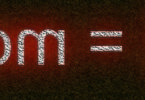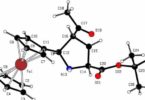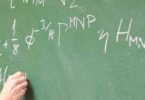COMEDK Undergraduate Entrance Test Chemistry model practice question paper consist 60 multiple choice questions with answers based on COMEDK syllabus and exam pattern.
Ques. 0.01 M solution of each of urea, salt and Na2SO4 is taken. The ratio of depression in freezing point will be
(a) 1:1:1
(b) 1:2:1
(c) 1:2:3
(d) 2:2:3
Ques. Molecular weight of a compound of an element is 125. If it reacts with three atoms of chlorine, then its equivalent weight will be approximately
(a) 124
(b) 41
(c) 60
(d) 50
Ques. 24.4 gram benzoic acid is dissolved in benzene and its volume is made up to 1 liter. If benzoic acid is present in the form of a dimer, then the formality of the solution will be
(a) 1.0
(b) 0.2
(c) 0.1
(d) 0.5
Ques. The atomic radii from Cr to Cu is almost identical because of
(a) Increasing nuclear charge from Cr to Cu
(b) Repulsion among increased electrons
(c) Increased screening effect to nullify increased nuclear charge
(d) All the above
Ques. The correct order of second ionization potential of carbon, nitrogen, oxygen and fluorine is
(a) C > N > O > F
(b) O > N > F > C
(c) O > F > N > C
(d) F > O > N > C
Ques. On addition of one ml of 10% NaCl solution to 10 ml gold sol in the presence of 0.25 gm of starch. The coagulation is just prevented, starch has gold number
(a) 0.025
(b) 0.25
(c) 2.5
(d) None
Ques. 0.2 gm of fine animal charcoal is mixed with half litre of acetic acid (–SM) solution and shaken for 30 minutes
(a) The concentration of the solution decreases
(b) Concentration increases
(c) Concentration remains same
(d) None of these
Ques. What is molecular formula of 1.35 gm of phosphorus vapour of volume 500 ml at 300°C and 750 mm of Hg pressure
(a) P8
(b) P6
(c) P3
(d) P4
Ques. Which of the following difference exists between a colloid and a crystalloid?
(a) Diameter
(b) Size of particles
(c) Radius
(d) Solubility
Related: questions about protists
Ques. The main product of the nitration of propane is
(a) Nitropropane
(b) 2-Nitropropane
(c) Ethyl nitrite
(d) Nitroethane
Ques. Which of the following statements is correct for CsBr3
(a) It is a covalent compound
(b) It contains Cs3+ and Br– ions
(c) It contains Cs+ and Br3– ions
(d) It contains Cs+, Br– and lattice Br2 molecule
Ques. Crystal structure of Nacl is
(a) FCC
(b) BCC
(c) (a) and (b) both
(d) None of the above
Ques. Aniline was subjected to acetylation and the acetylated product was nitrated. Which of the following products is formed when this nitrated product is hydrolysed
(a) Hydroxyacetanilide
(b) p-Nitroaniline
(c) o-Nitroacetanilide
(d) m-Nitroaniline
Ques. According to position in the electrochemical series, which of the following metals cannot displace hydrogen form water and acids
(a) Al
(b) Hg
(c) Pb
(d) Ba
Related: Physics Units and Measurement MCQs
Ques. Increasing rate of dehydrohalogenation
(a) RF < RCl < RBr < RI
(b) RI < RBr < RCl < RF
(c) RCl < RF < RBr < RI
(d) RF < RI < RCl < RBr
Ques. Which of the following is formed by the reaction of hydrazine on urea?
(a) Semicarbazide
(b) Methylolurea
(c) Perabanic acid
(d) Acetylurea
Ques. In compounds of type ECl3, where E = B, P, As or Bi, the angles Cl – E – Cl for different E are in the order
(a) B> P = As = Bi
(b) B > P > As > Bi
(c) B < P = As = Bi
(d) B < P < As < Bi
Ques. All of the following properties can be used for distinguishing alkyl cyanides and alkyl isocyanides, except
(a) Odour
(b) Reduction
(c) Hydrolysis
(d) Solubility in ether
Ques. Which of the following undergoes reaction with pheno, but not by aniline
(a) CH3COCl
(b) Br2 + H2O
(c) CH3Cl + AlCl3
(d) CH3I
Related: kingdom animalia quiz
Ques. Numbers of electrons in –CONH2 is
(a) 22
(b) 24
(c) 20
(d) 28
Ques. Which of the following pairs is correctly matched?
(a) CFCl3 – Freon – 111
(b) CF2Cl2 – Freon – 112
(c) C2F2Cl4 – Freon – 12
(d) C2F4Cl2 – Freon – 114
Ques. Which of the following molecular species has unpaired electron (s)
(a) N2
(b) F2
(c) O2–
(d) O22–
Ques. Which of the following reaction is used ascent up a homologous series of carboxylic acids?
(a) Hell-Volhard-Zelinsky reaction
(b) Hunsdiecker reaction
(c) Arndt-Eistert reaction
(d) Kolbe electrolytic synthesis
Ques. Among the following species, identify the isostructural pairs NF3, NO3–, BF3, H3O+, HN3
(a) [NF3, NO3–] and [BF3, H3O+]
(b) [NF3, HN3] and [NO3–, BF3]
(c) [NF3, H3O+] and [NO3–, BF3]
(d) [NF3, H3O+] and [HN3, BF3]
Related: total internal reflection questions
Ques. A sudden large jump between the values of second and third ionization energies of an element would be associated with the electronic configuration
(a) 1s2, 2s2 p6, 3s1
(b) 1s2, 2s2 p6, 3s2p1
(c) 1s2, 2s2 p6, 3s2p2
(d) 1s2, 2s2 p6, 3s2
Ques. Which of the following is obtained on adding nitrous acid to 2-nitropropane and shaking it with sodium hydroxide and ether
(a) Red aqueous solution
(b) Blue ethereal solution
(c) Colourless solution
(d) Milkiness
Ques. Benzenediazonium salt is converted to which compound in Balz-Schiemann reaction
(a) C6H5Br
(b) C6H5I
(c) C6H5Cl
(d) C6H5F
Ques. Volume of a gas NTP is 1.12 x 10–7 c.c. The number of molecules in it will be
(a) 3.1 x 1020
(b) 3.01 x 1012
(c) 30.1 x 1023
(d) 3.01 x 1024
Ques. pH will undergo maximum change on mixing which of the following solution in 10 ml 0.1 M KOH
(a) 10 ml 2.0 M HNO3
(b) 20 ml distilled water
(c) 10 ml 1.0 M HNO3
(d) 20 ml 0.5 M HNO3
Related: kinetic theory questions
Ques. Which of the following compounds is the product of the reaction of phenol and diazomethane?
(a) o-Cresol
(b) Methyl phenyl ether
(c) Phenyldiazomethane
(d) Phenetole
Ques. Concentrations of Pb+2 and Cu+ ions in a solution are 0.001 M and 0.01 M, respectively. Which of the following will be precipitated first on adding Cl–to it, if the Ksp values of PbCl2 and CuCl are 10–6 and 10–7, respectively
(a) CuCl2
(b) CuCl
(c) PbCl2
(d) Difficult to say
Ques. In a reaction 2A + B ![]() A2B, the reactant A will disappear at
A2B, the reactant A will disappear at
(a) Half the rate that B will decrease
(b) The same rate that B will decrease
(c) Twice the rate that B will decrease
(d) The same rate that A2B will form
Ques. Benzaldehyde is reacted with which of the following compound in Knoevenagel reaction
(a) Acetic anhydride
(b) Malonic ester
(c) Acetaldehyde
(d) Acetone
Ques. The normal vapour density of PCl5 is 104.25. Its vapour density at 250°C when it is 80% dissociated is
(a) 52
(b) 57.9
(c) 86
(d) 120
Related: quiz on kinematics
Ques. If Ksp for HgSO4 is 6.4 x 10–5 then solubility of the salt is
(a) 8 x 10–3
(b) 8 x 10–6
(c) 6.4 x 10–5
(d) 6.4 x 10–3
Ques. Which of the following products is prepared from Benzylidyne chloride on hydrolysis by iron catalyst and lime water?
(a) Calcium benzoate
(b) Benzoic acid
(c) Benzyl alcohol
(d) Benzaldehyde
Ques. What should be the molality of a solution in a solvent of a particular solute, if depression in freezing point is 0.184°C and freezing point depression constant is 18.4?
(a) 0.01
(b) 1
(c) 0.001
(d) 100
Ques. Which orbital has two angular nodal planes?
(a) s
(b) p
(c) d
(d) f
Ques. Which of the following will undergo reaction to form a tertiary amine?
(a) MeOH + MeNH2
(b) Me2NH + MeI
(c) Me3C – Cl + NH3
(d) (CH3)3C – MgCl + NH2Cl
Related: transition metal compound practice questions
Ques: Methyl isocyanide on hydrolysis gives
(a) CH3NH2
(b) HCOOH
(c) CH3COOH
(d) Both (a) and (b)
Ques. An oxide of metal (M) has 40% by mass of oxygen. Metal M has relative atomic mass of 24. The empirical formula of the oxide is
(a) M2O
(b) M2O3
(c) MO
(d) M3O4
Ques. The reagent appropriate for conversion of a primary amine directly to an alkyl chloride is associated with the following name
(a) Hinsberg
(b) Tilden
(c) Grignard
(d) Hofmann
Ques. For the following homogeneous gas reaction 4NH3 + 5O2 ⇌ 4NO + 6H2O, the equilibrium constant Kc has the dimension of
(a) Conc+10
(b) Conc+1
(c) Conc–1
(d) It is dimensionless
Ques. Which of the following classes of compounds is formed on alkaline hydrolysis of methyl isocyanate?
(a) 3° Amine
(b) 2° Amine
(c) 1° Amine
(d) Ammonium salt
Related: physical world and measurement
Ques. Which pair of elements has same chemical properties?
(a) 13, 22
(b) 3, 11
(c) 4, 24
(d) 2, 4
Ques. Standard reduction potential of metallic electrodes, A, B, C and D, are +0.14V, +0.34V, –0.74V and –0.4V, respectively. Decreasing order of their reducing capacity will be
(a) C > D > A > B
(b) A > B > C > D
(c) A > C > D > B
(d) C > B > A > D
Ques. In a secondary amine
(a) One – NH2 group is attached on a secondary carbon atom
(b) Two – NH2 groups are attached on the same carbon atom
(c) One – NH – group is attached to two alkyl groups
(d) Two – NH2 groups are present
Ques. For hydrogen gas Cp – Cv = a, and for oxygen gas Cp – Cv = b, so the relation between a and b is
(a) 1 = 16b
(b) 16a = b
(c) a = 4b
(d) a = b
Ques. Which of the following elements will have the lowest first ionization energy ?
(a) Mg
(b) Rb
(c) Li
(d) Ca
Ques. Which of the following is formed on fusing solid caustic potash in nitrobenzene?
(a) An SE product
(b) A mixture of two SE products
(c) Phenol
(d) A mixture of two SN products
Related: thermodynamics multiple choice questions with answers
Ques. Which of the following products is obtained on exposing a mixture of benzene and chlorine to ultraviolet light?
(a) Benzene hexachloride
(b) Hexachlorobenzene
(c) 1,3,5-Trichlorobenzene
(d) Benzotrichloride
Ques. Which of the following attacks glass
(a) HCl
(b) HF
(c) HI
(d) HBr
Ques. O.N. of P in KH2PO2 is
(a) +1
(b) +3
(c) +5
(d) –4
Ques. A sample of H2SO4 (density 1.8 g/ml) is 90% by weight. What is the volume of the acid that has to be used to make 1 litre of 0.2 M H2SO4
(a) 16 ml
(b) 10 ml
(c) 12 ml
(d) 18 ml
Ques. If the pressure and absolute temperature of 2 litres of CO2 are doubled, the volume of CO2 would become
(a) 2 litres
(b) 4 litres
(c) 5 litres
(d) 7 litres
Ques. Phenyl isocyanides are prepared from which of the following reactions
(a) Rosenmund’s reaction
(b) Carbylamine reaction
(c) Reimer-Tiemann reaction
(d) Wurtz reaction
Ques. One mole of potassium dichromate completely oxidises the following number of moles of ferrous sulphate in acidic medium
(a) 1
(b) 3
(c) 5
(d) 6
Ques. Which of the following is optically active?
(a) Butane
(b) 4-methylheptane
(c) 3-methylheptane
(d) 2-methylheptane
Ques. Which of the following is formed on complete hydrolysis of acetaldehyde cyanohydrins
(a) Citric acid
(b) Tartaric acid
(c) Malic acid
(d) Lactic acid
Related: practice probability questions
Ques. Which of the following names is incorrect for (CH2)6N4
(a) Hexamine
(b) Aminoform
(c) Urotropine
(d) Hexametheylenedraiamine
Ques. In what regard, an organic catalyst is different from an inorganic catalyst
(a) It acts at low temperature
(b) It is proteinous in nature
(c) It acts by different mechanism
(d) It acts at high temperatures
Ques. Which of the following compounds gives ethyl with nitrogen pentoxide to give acetyl nitrate?
(a) Acetyl chloride
(b) Acetic anhydride
(c) Acetamide
(d) Ethyl acetate
Ques. A salt of sulphurous acid is called
(a) Sulphate
(b) Sulphurate
(c) Sulphite
(d) Sulphide
Ques. Which of the following ions form most stable complex compound
(a) Cu++
(b) Ni++
(c) Fe++
(d) Mn++
Ques. Nitrogen and the nitride ion have the
(a) Same size
(b) Same number of electrons
(c) Same electrons configuration
(d) Same number of protons
Related: Chemistry Gaseous State questions
Ques. Electron having : m = +1 and s = – ½ cannot belong to the following orbital
(a) p
(b) d
(c) f
(d) s
Ques. Which one of the following is more acidic
(a) Butane
(b) 1-butene
(c) 1-butyne
(d) 2-butyne
Ques. How many ml of 0.1 M oxalic acid solution is required to reduce 0.01 mole KMnO4 to MnO2 is
(a) 250
(b) 150
(c) 100
(d) 500
Ques. Which one of the following is smallest in size ?
(a) N3–
(b) O2–
(c) F–
(d) Na+
Ques. A reducing agent is
(a) Electrons acceptor
(b) Electrons donor
(c) Protons donor
(d) None of these
Related: solutions chemistry questions
Ques. The following equilibrium exists in aqueous solution CH3COOH ⇌ CH3COO– + H+. If dilute HCl is added without a change in temperature, then the
(a) Concentration of CH3COO– will increase
(b) Concentration of CH3COO– will decrease
(c) Equilibrium constant will increase
(d) Equilibrium constant will decrease
Ques. The property by virtue of which a compound can turn the plane polarised light is known as
(a) Photolysis
(b) Phosphorescence
(c) Optical activity
(d) Polarization
Ques. When ethyl alcohol is heated with red phosphorus and HI, then which of the following is formed
(a) C2H6
(b) CH4
(c) C3H8
(d) C2H4
Ques. Purification of a colloid can be done by which of the following
(a) Peptisation
(b) Dialysis
(c) Coagulation
(d) Condensation
Ques. The following acids have been arranged in the order of decreasing acid strength. Identify the correct order
CIOH (I), BrOH (II), IOH (III)
(a) I > II > III
(b) II > I > III
(c) III > II > I
(d) I > III > II






